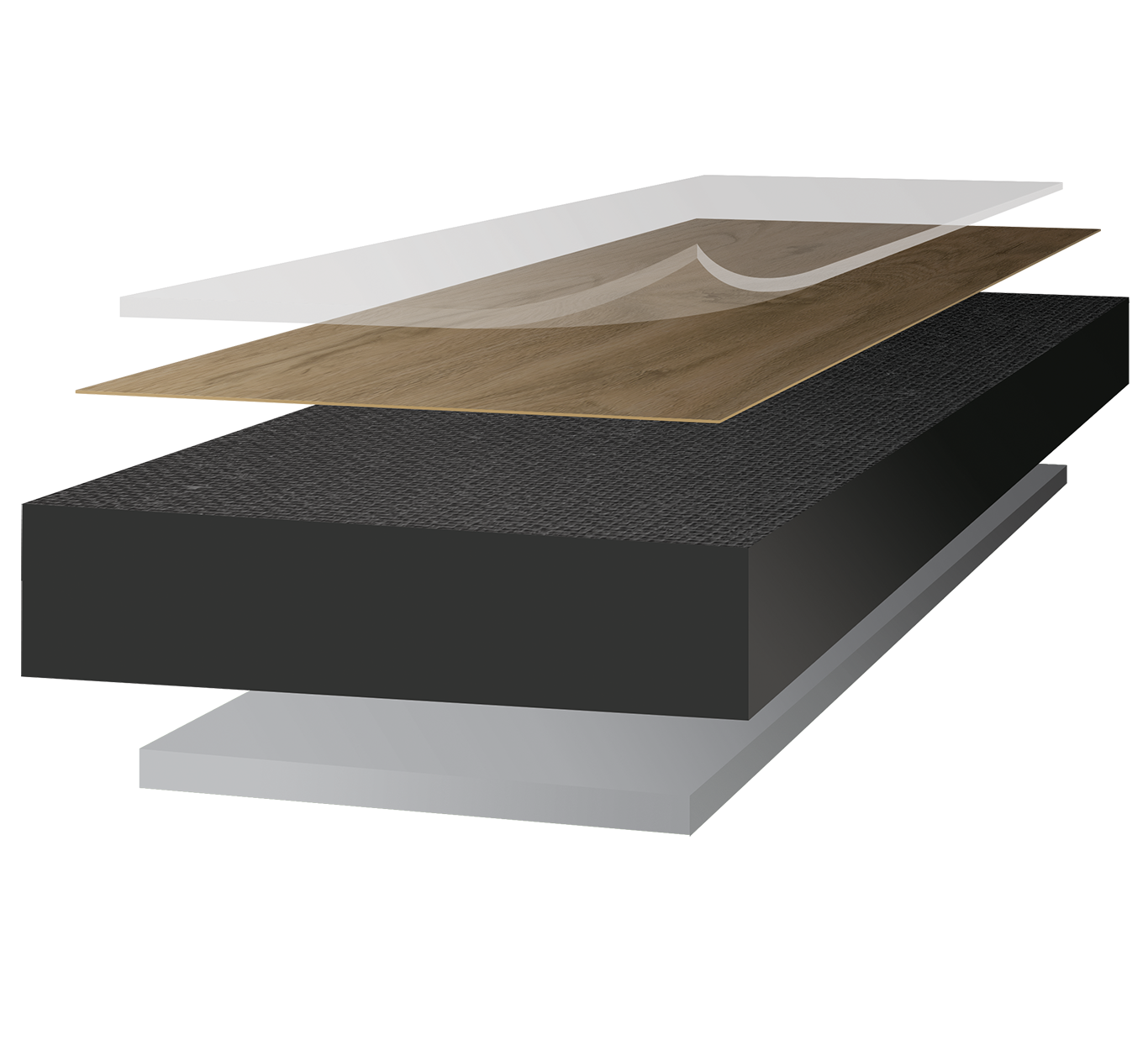Pavimento - Rovere Cottage FS 6005 - Evolution Fast Syncro


Evolution Fast Syncro
High definition floors that add to the innovative printing technique the perfect combination between the relief of the finish and the reproduction of woody textures, for both a visual and tactile experience.
The large size is particularly indicated when you need to expand the space perception.
Usage classes and classifications
Composition
Vinyl flooring composed of:
- 0,55 mm Transparent PVC wear layer (PU)
- 0,10 mm Pure PVC decor layer printed using innovative techniques
- 4,35 mm SPC layer
- 1,00 mm Polyethylene specialist underlay
The components are heat-assembled on a non-continuous press.

Installation instructions
The flooring must be laid on a flat, hard, dry (without humidity traces), clean, smooth and dust-free subfloor.
Flat subfloor = Flatness must be < to 2 mm below the positioning of the 2 metres rod. The subfloor must not have irregularities > than 1 mm / 20 cm. In case of gluing on a underfloor heating, turn off the heating 24 hours before the laying operation. If the surface has irregularities more than 1 mm deep, the application of a levelling product should be considered.
PLEASE NOTE: the fire classification Bfl-s1 is guaranteed when the flooring is laid on non-combustible substrate.

• Precautions for use.
Apply felt pads below the legs of furniture or below heavy objects. Protect the planks from direct heat sources such as stoves and chimneys. Dyed rubber-based and castors (castor chairs, tables etc.) may indelible stain the flooring.
• Floor cleaning.
Vacuum cleaner or wet cloth. Use only Detergent Evo of Virag. Difficult stains: dilute bleach, alcohol or lemon juice. Ink, tomato, mustard, blood, beet, mercurochrome stains: leave diluted bleach on for some minutes without scrubbing. Rinse abundantly. Rust: clean with a rust preserver for fabrics and rinse abundantly. Grease, ink and felt-tip pen: scrub slightly with a piece of cloth soaked in alcohol. Rinse abundantly.
• Precautions for maintenance.
Absolutely avoid using acetone and chlorinated solvents (e.g. trichloroethylene).






